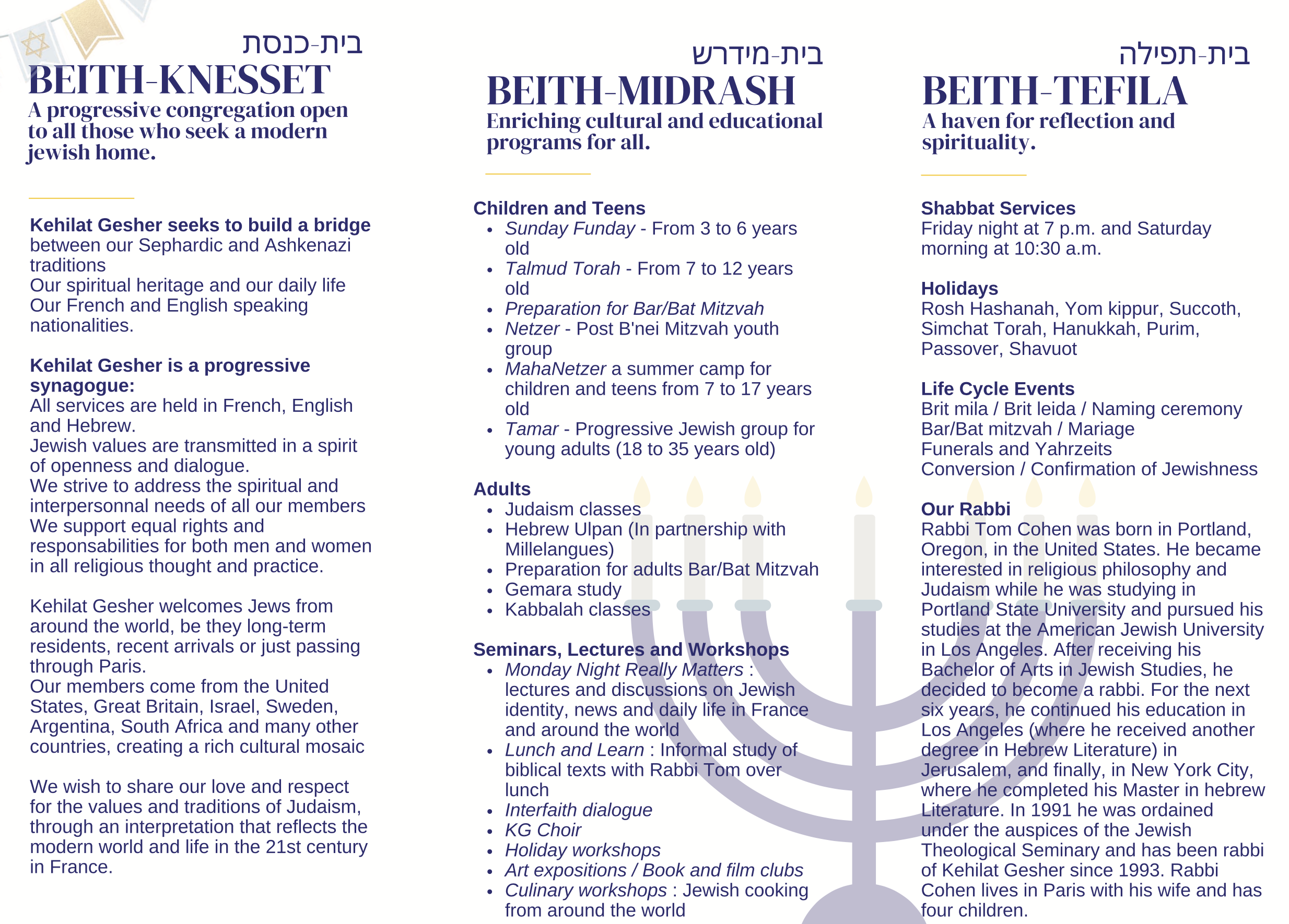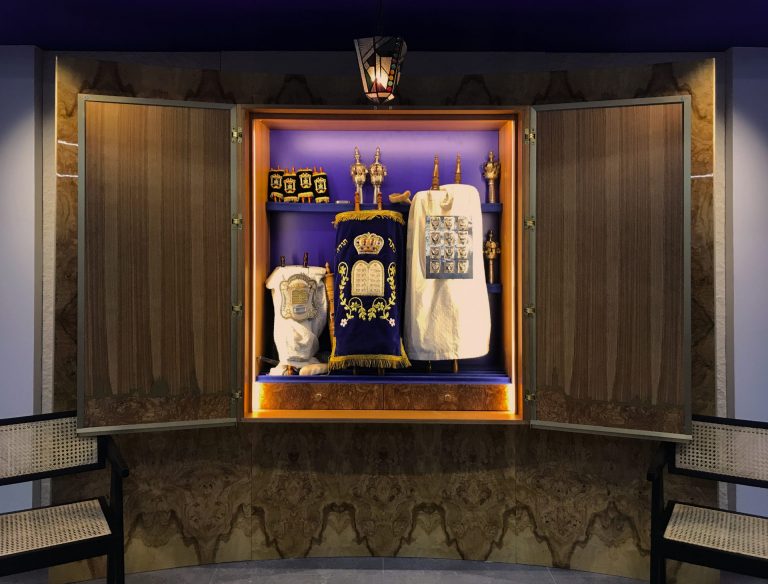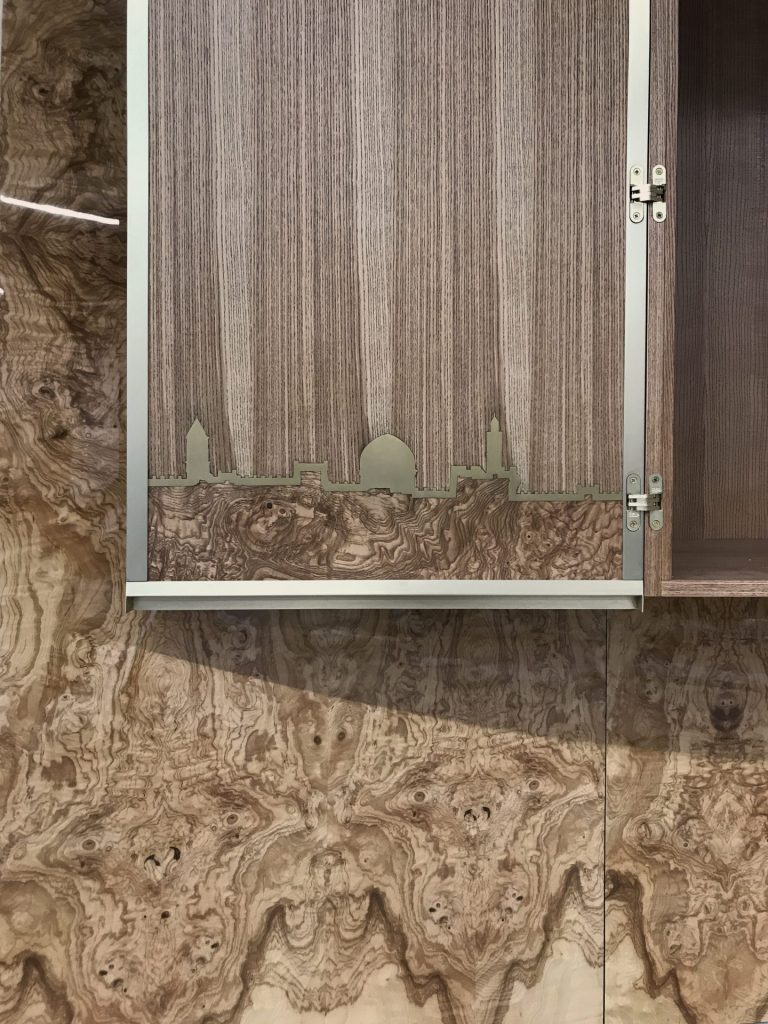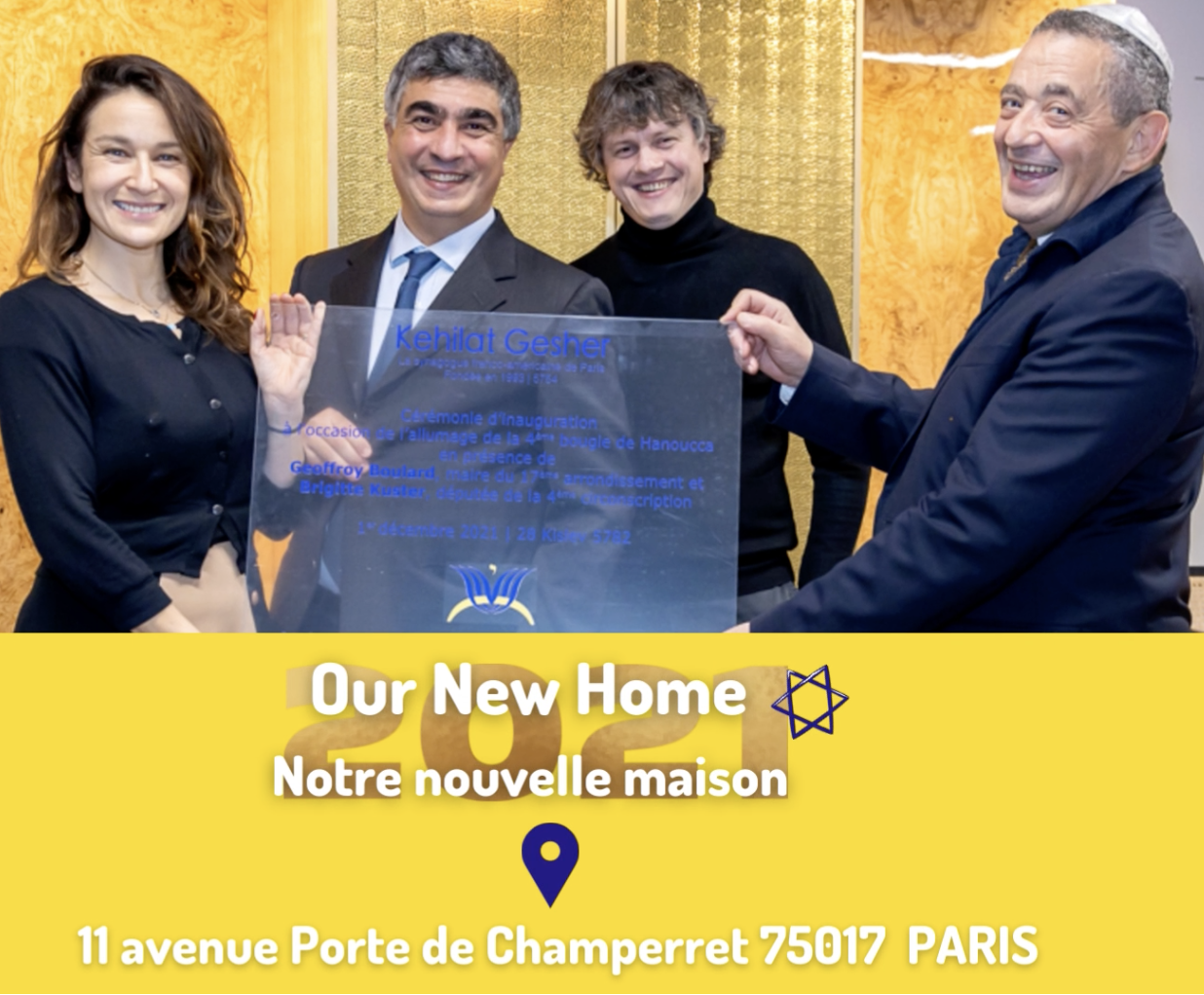
Kehilat Gesher is the only progressive, bilingual synagogue in the Paris region, offering all services in English, French, and Hebrew. Founded thirty years ago, our congregation includes over 170 families and welcomes some 450 individuals for our annual High Holy Day services. Since 2021, Kehilat Gesher has had spacious premises located at Porte de Champerret in the 17th arrondissement.
As our name suggests, Kehilat Gesher is a community dedicated to building bridges between French- and English-speaking nationalities, between Sephardic and Ashkenazi heritages, and between spiritual tradition and modern life.
A liberal, egalitarian congregation dedicated to the promotion of Jewish values, Kehilat Gesher is committed to openness and exchange. Our educational and cultural activities include a wide variety of classes, ateliers, concerts, and lectures for adults, teens, and children as young as three years old.
Kehilat Gesher helps its members celebrate and honor the fundamental passages of their lives, be it births (brit mila), marriages, or funerals. Forty children are enrolled in our Talmud Torah, and the congregation organizes around fifteen Bar and Bat Mitzvahs every year.
A progressive synagogue embracing both Reform and Conservative values, Kehilat Gesher supports equal rights and responsibilities for both men and women in all religious thought and practices.
Kehilat Gesher is known for its warmth, its openness, and its commitment to social justice through Tikkun Olam: “repairing the world.” We are members of the World Union for Progressive Judaism and have contributed to the constitution of the Fédération du Judaïsme Libérale Francophone en Europe (the Federation of French-speaking Liberal Judaism in Europe). We are also one of the founders of the new Assemblée du Judaïsme Libéral, which brings together liberal Jewish communities in France.
“Kehilat Gesher – The Beginning”
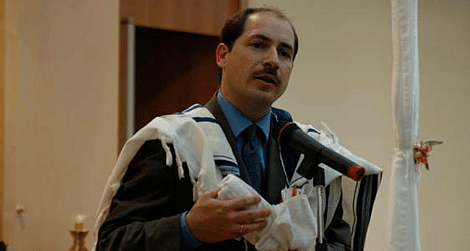 What happens when five Franco-American couples, with young children and adolescents, living in and around Saint-Germain-en-Laye, a western suburb of Paris, and in search of a meaningful liberal Jewish education and community, meet a wonderful young, energetic, cultured rabbi from Oregon who is engaged to the first female rabbi in France and Europe? The answer is easy. You don’t let him go!
What happens when five Franco-American couples, with young children and adolescents, living in and around Saint-Germain-en-Laye, a western suburb of Paris, and in search of a meaningful liberal Jewish education and community, meet a wonderful young, energetic, cultured rabbi from Oregon who is engaged to the first female rabbi in France and Europe? The answer is easy. You don’t let him go!
Between 1991 and 1993, we, as Jewish parents, were trying out various Talmud Torah classes for our children, including our local Orthodox synagogue, which definitely did not correspond to the Jewish education we wanted to transmit. We would get together for potluck Kabbalat Shabbat meals and Jewish holidays with a group called the Jewish Connection. I first met Rabbi Tom at a Passover seder; and when we found out he was going to marry Pauline Bebe, we just knew that this American rabbi would be staying in Paris.
Very shortly after meeting Rabbi Tom, he literally saved the day when he proposed to continue my daughter’s Jewish education once a week at Copernic where he was teaching part-time. She had been enrolled in Hebrew classes at the orthodox synagogue in Saint Germain-en-Laye and was quickly losing motivation. As you all know, our Rabbi Tom can remedy this with a snap of the fingers. In fact, our daughter, Camille Malkah Joseph, along with Juliette Adida, became the first Batei Mitzvah of KG. We actually held our first Bnei Mitzva classes every Sunday “chez nous” in Saint-Germain-en-Laye just before lunch, so I, inadvertently, got to participate in these enlightening, ethical, pre-teen discussions from my kitchen. Our first Bnei Mitzva students were Ezra Konvitz, Camille and Juliette, later joined by Daniel Jones and Ilan Kaufer. Isa and Josef Konvitz became KG members very shortly after its incorporation and definitely rank among the KG pioneers!
Betsy Matheny, founding member and secretary of KG, recalled that the initial invitation went something like this: “We are five families looking for a great rabbi, how about making our own synagogue in Saint-Germain-en-Laye?” Betsy’s son had attended a Jewish school back in the States called “Gesher” (bridge), and Rabbi Tom suggested that we call the new community “Kehilat Gesher,” the community of bridges. The name was a winner.
The five original families were, in fact, a good cross-section of American and French, West Coast/East coast, Ashkenazi and Sephardi. One could say this made up our minyan with Jil and Jean-Pierre Deheeger, Betsy and Ted Matheny, Dina and Jean-Marc Chetrit, Pierre-Jean ז״ל and Gina Hassan, Michelle and Noé Green-Levasseur. You can imagine that with this small group of founders, several of us were on the Board. Our very first KG president was Jil Deheeger, Jean-Marc Chetrit was the treasurer, and Betsy Matheny was the secretary. Pierre-Jean and I served as vice-presidents. We signed the papers incorporating KG at our apartment in Saint-Germain-en-Laye, but our first legal address, for a couple of years, was the home of Dina and Jean-Marc Chetrit (the treasurer) in Poissy. We celebrated KG’s one year anniversary at our apartment, lighting our first candle. (There is a photo print to prove it; I am still looking for it!).
Betsy Matheny recently sent me one of our first Board meeting minutes, dated April 28, 1993, when we discussed and approved the name Kehilat Gesher with the following description : “The French Anglophone Jewish Congregation – a welcoming community serving Paris and the western suburbs.” I am so proud to say that we have fully retained the epithet “welcoming,” which is always the feedback we get from people who have come for the first time. We began to form committees for security, newsletters, events, High Holidays, education and publicity, which I’m sure still rings a bell today! It was always a scramble in the beginning to find a suitable location for the High Holidays accessible to Paris and public transportation.
The first year we offered Kabbalat Shabbat services, Talmud Torah, Bnei Mitzva classes, adult education, and, of course, High Holiday services. Most of the classes and services took place in people’s homes on a rotating basis. We held some of our first Kabbalat Shabbat services as well as Talmud Torah classes at the Aumônerie of the Lycée International in Saint-Germain-en-Laye before we eventually rented our first venue, 10, Rue de Pologne, in the same building as Alpha Optical today and too close to the Poissonnerie, especially in late springtime when we opened the windows! It was quite a big step for KG to have its very own shul.
It was also very early on that we began conducting Friday night services downstairs at Goldenberg’s restaurant in the 17th arrondissement. For several years, we held Tishri services at the Orée du Bois restaurant at the Porte Maillot, which became legendary, as it was closed in 1999 due to a mysterious fire. I will always remember the year I was head of the security committee and was told we had to evacuate the building in the middle of Rosh Hashanah services. I went up to the bima ever so calmly and whispered the news in our Rabbi’s ear!
So you can see that we have come a long way since 1993. Last December, as we lit the fourth candle of Chanukah, the light of our first anniversary candle caught my mind’s eye and linked the past with the present. I was beaming at the inauguration of our new synagogue, Porte de Champerret, our new home, so happy to witness the determination, commitment to education and ethical values of Progressive Judaism, and the warmth of our community of bridges. May we never lose that pioneering spirit that allows Kehilat Gesher to move forward while keeping our traditions alive.
Shalom to all,
Michelle Green
March 6, 2022
Since 2021: A New Ark
The heart of the sanctuary in Kehilat Gesher’s new home is now officially beating. A magnificent ark, holding the community’s Torah scrolls, presides over the bimah, or stage, where Rabbi Tom Cohen currently leads limited shabbat services while Covid restrictions remain in place. A stunning mix of olive burl wood and hammered brass, the ark was designed by Bruno Quijano, one of the architects behind the renovations inside Kehilat Gesher’s new home.
As usual, Rabbi Tom was a source of inspiration and ideas. Quijano also received continuous support from the ‘Josué’ committee on KG’s board, as well as architect Isabelle Cyr, his partner on the renovation project. But one of his strongest inspirations was the sea. The Mediterranean, to be exact. The water, the land, the shores of Israel all influenced the choice of materials and colors that light up the décor, in particular that of the ark, the Aron HaKodesh. Olive wood, omnipresent in the region, plays a major role, as does a deep ultramarine blue—International Klein Blue—first mixed by French artist Yves Klein. That luminous color flows across the dropped ceiling of the bimah and inside the ark, lined with soft fabric to protect its contents.
The ark itself hangs on a wall of textured concrete the color of the walls of Jerusalem. With its luminous doors of hammered brass, the olive-ash veneer cabinet shimmers under the Nir Tamid, the “eternal light” or sanctuary lamp. A curved panel of olive burl wood “hugs” the back of the ark, in the words of Quijano, who chose this precious wood not just for its beauty, but also for its symbolism. Derived from the roots of ancient olive trees and prized for its rich patterns and kaleidoscopic swirls, the wood “reminds us not only of the tree of life, but also of our roots, which carry the Torah in its arms.” Light, reflected in the colors and the olive wood, is most apparent in the ark’s golden doors, whose hammered surface will develop a patina over the years. “The beaten surface reminds us that even through ‘suffering’ we can find beauty,” says Quijano. Four chairs, modern replicas of a design by Le Corbusier, bookend the cabinet.
It was Rabbi Tom who came up with the idea of putting the skyline of Jerusalem on the inside of the ark’s doors, which has been realized in brass and olive wood marquetry. He also helped design the custom font for the letters that spell out the words above the bimah, a quote from Psalm 100:2: “Serve the Eternal with gladness; come before God with joyful songs.” Anyone who has attended services at Kehilat Gesher, where singing is central to every shabbat, will know how appropriate that citation truly is.
But not all Quijano’s inspiration comes from spiritual sources. “I don’t deny that I’ve also been inspired by the great masters of Italian architecture of the ‘40s and ‘50s, Gio Ponti and Gustavo Pulitzer, especially their cruise ship interiors, trying to achieve a sober and elegant result,” says Quijano, who became an architect in Italy, studying in Milan.
Which brings us back to the sea. “I find that this large space with its bay windows and skylights looks a little like a ship,” says Quijano. In fact, the artisans who constructed the ark, of the Italian firm CM Contract, specialize in the interiors of yachts and cruise ships. “They really helped us find the best solutions for a result that was identical to what I imagined, all from a simple hand-drawn sketch.”
Soon the sanctuary will be ready for its “passengers,” and when the new KG opens its doors and the congregation flows in, Rabbi Tom and Bruno Quijano will be there to welcome them aboard.
Inauguration Speeches
December 1, 2021
Rabbi Tom Cohen :
Madame la Députée, Monsieur le Maire, Monsieur et Madame les Rabbins, Monsieur Imam, Messieurs les Prêtres, Madame la Hazzanit, chers membres de ma communauté et chers sympathisants,
Dear members and friends of my community,
Just between ourselves… I really didn’t believe that tonight was going to happen!
Let me explain. After the High Holidays, I met with our Board to propose the idea of inaugurating our new building during Hanukkah.
I explained that historically, in France, many synagogues have held such ceremonies during this period. I cited the example of the Hanukkat Habayit, the dedication of the synagogue of the Union Libérale Israelite de France, which also took place on December 1, but in 1907.
That community has been close to my heart since I arrived in France and worked alongside Rabbi Williams. He is represented here tonight by his wife, Isabelle Williams.
Isabelle, please tell Michael that I wanted to thank you both publicly for your kindness, trust, mentorship and friendship over the years.
But with all the delays in our building works over the past weeks, and especially with the endless increase in Covid contaminations, I didn’t really believe that we would actually be here this evening… that is, until last night.
Yesterday I had the great surprise of finding all my children gathered together around the dinner table, brought together by Rabbi Pauline Bebe, my partner in life and their mother, to mark this occasion. Suddenly I realized that this truly was going to happen… and then I got scared.
It wasn’t that I was frightened the way you can be frightened by a horror movie. It was a question of being struck by a deep consciousness of the responsibilities and the obligations that this moment represents in the life of my community. It is truly a historic moment in the life of Kehilat Gesher.
The word that really reflects my feelings is the Hebrew word יראה (yir’ah). It is often translated as “fear,” as in the expression יראת יי (yir’at Adonai), that is, “fear of God” or “God-fearing.”
Many of you here will recognize the Hebrew root in the expression yamim nora’im (Days of Awe), the term used to describe Rosh Hashanah and Yom Kippur.
That is correct, but the root also has another meaning, which is wonder and gratitude.
As David says in Psalm 118:
זֶה־הַ֭יֹּום עָשָׂ֣ה יְהוָ֑ה נָגִ֖ילָה וְנִשְׂמְחָ֣ה בו.
(Zeh-hayom âsâh Adonay nâghiylâh venismechâh bho.)
(This is the day that God has made: let us rejoice and be glad in it.)
I am filled tonight with admiration, appreciation and gratitude for all our members and friends, past and present, near and far, who by their enthusiasm, by their energy, their ever-enduring presence, and their financial contributions… have helped us create this home! But this place is only bricks, only a platform, only a prop.
For me, the task is to make it a home – we have to make it a truly living Jewish home, that is proud of being Liberal:
A place to study, to pray and to eat.
A place to find friends and to make friends.
A place where questions can be asked and sometimes, where answers can be found.
A place for art and for music.
A place for dialogue between Jews; for dialogue between Jews and people of other religions; and between believers and non-believers.
The aim is to work together, on the basis of our heritage, to build a society which is more just, more fraternal and more equal.
Much remains to be done with your financial help: putting up partitions, installing the heating system, redoing the entire basement!
But now is the time to be in the moment, and to appreciate how much we have already accomplished. There can be no beracha, so rich in meaning and more appropriate than to stand and say together the Shehechiyanu:
ברוך אתה יי אלוהינו מלך העולם שהחיינו וקיימנו והגיענו לזמן הזה.
(Baruch ata Adonai, eloheinu melech ha-olam, shehecheyanu vekiyemanu vehigianu la zeman hazeh.)
Exalted are You, Adonai our God, Eternal Sovereign, who has kept us in life, sustained us, and has brought us to this very moment. Amen.
Samantha Woolfe, President :
Mrs. Kuster, Mr. Boulard, elected officials, spiritual representatives,
Hanukkah Sameach, Joyous Festival of Lights, Happy Hanukkah!
Welcome to Kehilat Gesher’s new home, synagogue and community center. And welcome to the celebration of our Festival of Light and miracles, tonight, the fourth night of Hanukkah, the 27th day of the month of Kislev in the year 5782.
For those of you who do not know me, my name is Samantha Woolfe. I am pleased to introduce myself as the new President of Kehilat Gesher, the Franco-American synagogue of Paris.
I can only begin with a tribute to my predecessor, Anne Sebbag, and to everyone who worked together during her presidency to make this moment possible. Anne will speak later in the evening, as will members of the New Home Committee, who worked with unflagging energy to find this new space for Kehilat Gesher. Thank you!
I also wish to express our gratitude to Mrs. Brigitte Kuster, who represents this district in the French National Assembly, and to Mr. Geoffroy Boulard, Mayor of Paris’s 17th arrondissement, for their unstinting support. Thank you for being here this evening.
Finally, I thank our volunteers not just for being here on this special occasion, but for their presence at every religious service, every activity, the courses and social events organized for our members and our friends. Whether for security, cuisine, Talmud Torah, early childhood Jewish education or music, our committed volunteers are always ready to share their enthusiasm for the transmission of our history and our traditions.
Tonight we will be privileged to hear our wonderful, beloved choir sing Hanukkah songs. We are particularly proud of them as an integral part of our very musical community. And later on this evening, I will have the great pleasure to present our quartet, the KG Arbé, making its debut performance.
None of this would be possible without our donors. You and your families have been at our side for years and years; some of you have been supporting us from the very beginnings of Kehilat Gesher, twenty-eight years ago. I particularly want to thank you. For all of us in the community and for our Rabbi Tom Cohen, this magnificent space testifies, once again, to your commitment.
Of course, and especially in the context of this Hanukkah celebration, I want to thank our Rabbi for illuminating our path and for his dedication. Many of us here in this community were married by Rabbi Tom, who has overseen the education of our children and has accompanied us through all the important events of life that we experience within our Jewish tradition.
Rarely in our lifetimes have we so needed the glow and hope of Hanukkah. This new space for praying, sharing, learning, singing, reading, discussing, eating, and dancing together is particularly important and necessary at this moment in time. And it seems to me a sign that Hanukkah—which means “dedication” in Hebrew—coincides with our inauguration.
It is sometimes said that the miracle of Hanukkah is not actually mentioned in either of the two books of Maccabees. And indeed, in the Second Book of Maccabees, it is written that the Festival of Hanukkah was created by Judah for the re-dedication of the Temple, which was to recall King Solomon’s inauguration of the First Temple in Jerusalem, that lasted eight days.
Can we, perhaps, draw a similar link with the history of our community as we celebrate, this evening, the re-inauguration and dedication of our community in this new synagogue?
Anne Sebbag, President of Kehilat Gesher from 2017-2021
Mrs. Kuster, Mr. Boulard, Elected officials, Spiritual representatives,
First, let me say how delighted I am to welcome you to Kehilat Gesher’s new home.
This is an occasion for looking back as well as looking forward. I will try to do both… but first, a few definitions, or clarifications, may be helpful:
What is Liberal Judaism? Representing the majority of Jews in the United States but only a minority in France, the Liberal or Reform Movement is a branch of Judaism which seeks to evolve in the context of contemporary societies and the modern world. One of the most visible reflections of this aspiration is the affirmation of the equality of women and men. In a Liberal synagogue, we sit together, not apart; the traditional “women’s gallery” does not exist.
What do we mean by “our new home”? Our reference is to the Hebrew word bayit, a word whose roots suggest many possibilities. House, home, foyer…
And what about our name, Kehilat Gesher? It means “bridge between communities”. The name was chosen by our founders with reference to their philosophy and their program, which remain ours today.
Our founding members deliberately chose the17th arrondissement as the home for the new Liberal community they were creating. Other Liberal Jewish communities were located in the east of Paris, in the 11th arrondissement, as well as in the west of Paris in the 15th and 16th arrondissements. There was also an anglophone community outside Paris, in the west of the Ile de France region. Today, the 17th arrondissement has the largest Jewish population in Paris, numbering some 40,000 individuals, so this choice has proven to be auspicious.
Since we first came to this arrondissement, Kehilat Gesher has moved around. Not exactly wandering, in the sense of our biblical texts—we have not spent forty years in the desert looking for a roof! Nonetheless our beginnings were modest. At first we gathered together in a member’s apartment, then the Goldenberg restaurant made a room available in its location on the Avenue de Wagram. I believe it was underground, in a basement – but Ashkenazis like me don’t like to talk about cellars and basements, so I’ll move on to the next location, Rue Leon Cogniet, where our little shul took root and grew, in the warm and friendly atmosphere created by our Rabbi Tom Cohen.
Our members come from different countries and from different traditions—Ashkenazi or Sefardi, to name only those two. We have learned to live together and to be open to the world, and this openness is our brand, our distinguishing characteristic. We speak many different languages—French, English, Hebrew—to name only those three. Occasionally, a few Yiddish words color our conversations. Not all our members live in Paris—members are dispersed around the world and yet united in the KG community. We believe that our richness consists in this very mixture, held together by our vision of Judaism. We accept our differences and our disagreements; we listen to others.
Our space on the Rue Leon Cogniet quickly proved to be too small for our growing numbers, but it was our home and we felt reassured there. Sometimes, though, during ceremonies, the synagogue was literally bursting at the seams: services and celebrations overflowed into the street… the situation couldn’t last. For security reasons, but even more, in order to ensure our future development, we had to move. We needed a new house for our home.
In the Book of Jeremiah (29:5), the Eternal commands His people: “Build houses and live in them”. We had to find a new place of our own, to build our space.
For nine months, we looked everywhere in the 17th arrondissement. We even went beyond its borders—Mayor Boulard, I have to admit that we visited properties in the 8th and 16th arrondissements. But our fidelity to the 17th weighed against any options we might have considered elsewhere—our history is here.
When we first visited this place, 11 Avenue de la Porte de Champerret, it was a center for sport and physical rehabilitation, with everything needed for body-building! Our ambitions are for spirit-building… so seeing the rehab center as the location of our future synagogue and community center required some imagination.
Not everyone was comfortable at first. We were leaving the neighborhood of the Parc Monceau and even crossing to the other side the Périphérique! But all the positive qualities of the property carried the day. And especially the fact that it meant that we were staying on our turf in the 17th, and strategically, at the meeting point of Paris, Neuilly and Levallois.
Another positive point was security. This is a discreet location. As with all Jewish communities today, we must be vigilant, continually looking to protect ourselves. As such we are a long way from the magnificent facades of the synagogues built by architects of renown, such as the Ashkenazi (Alsatian) synagogue of the Rue des Victoires and the Sephardi (Portuguese) synagogue of the Rue Buffault, or the Rue Pavée synagogue designed by Hector Guimard and not far from here, at the Porte de Courcelles, the imposing building of the Center for European Judaism.
But all that is not really important. We needed more space to build our new home. Women and men of good will, and talented architects, all members of this community, have transformed the sports center into our lively, welcoming community center.
As our history has often shown, we know how to rebuild our homes, our dwelling places and our communities. We are a people of builders, with one foot anchored in our historical memory, albeit often painful, even as the other moves toward the future. And it is inspired by the lessons of our history that we have moved into this new address at the Porte de Champerret.
As Israeli writer Amos Oz, has said: “This question has always preoccupied the Jews: are we a people in space or a people in time? In the Diaspora, we were defined as a people in time, as an eternal people. But even after settling here [in Israel], we remain incapable of considering ourselves as a people inscribed in a particular space.”
The history of the Jewish people is not only a question of space but a question of time.
The history of the Jewish people is the history of a “world-people”.
Here, in the 17th arrondissement, at the Avenue de la Porte de Champerret we will appropriate and adapt Space, broadening our horizons to advance, expand and move in Time. Our desire is to live our Judaism fully and freely in Kehilat Gesher, a community open to the world, a community of exchange, a community of openness, a community of welcome and of tolerance.
Hag Hanoucca Sameach! Happy Hanukkah!
